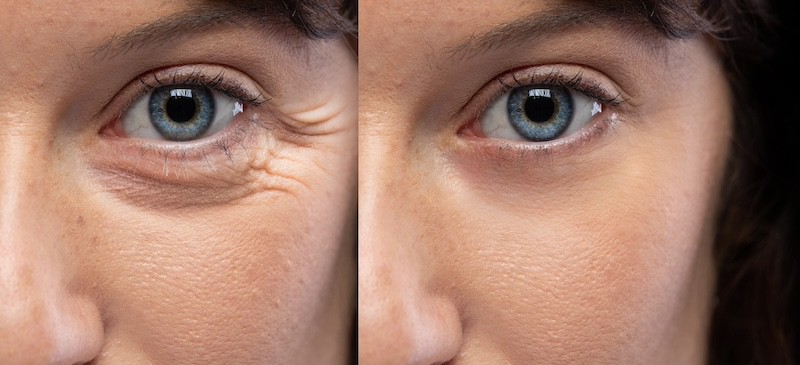This Dr. Axe content is medically reviewed or fact checked to ensure factually accurate information.
With strict editorial sourcing guidelines, we only link to academic research institutions, reputable media sites and, when research is available, medically peer-reviewed studies. Note that the numbers in parentheses (1, 2, etc.) are clickable links to these studies.
The information in our articles is NOT intended to replace a one-on-one relationship with a qualified health care professional and is not intended as medical advice.
This article is based on scientific evidence, written by experts and fact checked by our trained editorial staff. Note that the numbers in parentheses (1, 2, etc.) are clickable links to medically peer-reviewed studies.
Our team includes licensed nutritionists and dietitians, certified health education specialists, as well as certified strength and conditioning specialists, personal trainers and corrective exercise specialists. Our team aims to be not only thorough with its research, but also objective and unbiased.
The information in our articles is NOT intended to replace a one-on-one relationship with a qualified health care professional and is not intended as medical advice.
How to Get Rid of Crow’s Feet: Causes, Treatment & Prevention
March 14, 2024

Crow’s feet, those fine lines that radiate from the corners of your eyes, are a natural part of the aging process. While they can’t be completely erased, there are ways to address their appearance and even prevent them from becoming more noticeable.
These tiny lines that fan out from the corners of our eyes are a common concern for many as they age. Often associated with laughter and expressions of joy, they can become more prominent over time, leading to concerns about appearance and aging.
But fear not, for understanding what causes crow’s feet, how to treat them and even how to prevent them can help you maintain a youthful and vibrant appearance for years to come.
What Are Crow’s Feet?
Crow’s feet are small wrinkles that form around the eyes, typically due to a loss of skin elasticity and collagen. These lines resemble the feet of a crow, hence the name.
Crow’s feet typically become more prominent and noticeable with age due to a variety of factors, including repetitive facial expressions, sun exposure, smoking and loss of skin elasticity. They also become more prominent when you smile, squint or frown.
Scientifically known as “periorbital wrinkles,” they are the result of the skin folding and creasing over time.
Causes and Risk Factors
Several factors contribute to the development of crow’s feet:
- Aging: As we age, our skin naturally loses collagen and elastin, leading to a decrease in firmness and the formation of wrinkles.
- Sun exposure: Ultraviolet (UV) rays from the sun break down collagen and elastin, accelerating the formation of crow’s feet. Tanning beds can also exacerbate the appearance of crow’s feet.
- Smoking: Smoking restricts blood flow to the skin, depriving it of essential nutrients and oxygen, which can worsen wrinkles. It also depletes skin’s natural elasticity, making it more prone to crow’s feet. Air pollution and other free radicals can also affect the appearance of skin.
- Repetitive facial expressions: Frequent squinting, frowning, laughing, blinking or smiling can cause the skin around the eyes to crease and wrinkle over time, which contributes to the formation of crow’s feet.
- Dryness: Dryness — including dry skin in winter — can reduce the appearance of plumpness in the skin, particularly around the eyes since the skin there is usually thinner and more dry than other areas.
Treatment
While there’s no magic bullet for crow’s feet, several options can help. Here is how they’re treated by dermatologists and medical professionals:
1. Topical creams
Most topical creams for crow’s feet work by hydrating the skin, which can temporarily plump up the appearance of wrinkles. Some creams may also contain ingredients that stimulate collagen production or exfoliate the skin.
Retinol creams stimulate collagen production and may reduce the appearance of fine lines. In addition to retinoids, antioxidants and peptides also can help stimulate collagen production and improve the appearance of fine lines and wrinkles.
2. Injectable fillers
Dermal fillers, like hyaluronic acid, plump up the skin, smoothing out wrinkles. Hyaluronic acid is the most common type of filler used for crow’s feet. Other types of fillers include calcium hydroxylapatite (Radiesse) and poly-L-lactic acid (Sculptra).
Possible side effects of dermal fillers for crow’s feet include bruising, swelling, redness and tenderness at the injection site.
3. Botox injections
Botox injections can temporarily relax the muscles around the eyes, reducing the appearance of crow’s feet. Botox works by blocking nerve signals to the muscles around the eyes.
A small amount of Botox is injected into specific points around the eyes by a qualified health care professional, typically a dermatologist or plastic surgeon. The procedure is usually quick, taking only about 10–15 minutes.
Botox is generally safe, but there can be mild side effects like temporary bruising, swelling and redness at the injection site. In rare cases, more serious side effects can occur.
4. Laser therapy
Laser resurfacing treatments can stimulate collagen production and improve skin texture, reducing the appearance of crow’s feet. The procedure uses a laser to remove the top layers of skin. It can be an effective treatment for crow’s feet, but it is also more invasive than other options like botox or fillers.
There are two main types of laser resurfacing used for crow’s feet:
- Ablative laser resurfacing: This type of laser removes the entire top layer of skin. It is the most effective type of laser resurfacing for crow’s feet, but it also has the longest recovery time and the most significant risk of side effects.
- Fractional laser resurfacing: This type of laser delivers the laser energy in a fractionated way, creating microscopic columns of treated skin surrounded by untreated areas. This allows for faster healing and less risk of side effects than ablative laser resurfacing, but the results may not be as dramatic.
During the procedure, the laser beam is applied to the targeted area around the eyes. The laser energy heats the skin, which triggers the body to produce new collagen. This new collagen plumps up the skin and reduces the appearance of wrinkles.
Laser resurfacing can cause a number of side effects, including:
- Swelling
- Redness
- Crusting
- Scabbing
- Infection
- Changes in skin pigmentation
In addition, laser resurfacing is a more expensive option than other treatments for crow’s feet, such as Botox or fillers. The recovery time for laser resurfacing can be several weeks, and you will need to take precautions to protect your skin from the sun during this time.
5. Chemical peels
Chemical peels are used to improve the appearance of wrinkles and fine lines, including crow’s feet. They work by applying a chemical solution to the skin, which causes the outer layers to exfoliate and peel off. This triggers the skin to produce new collagen, resulting in smoother, younger-looking skin.
Possible side effects of chemical peels include temporary redness, swelling, stinging and crusting.
Consulting a dermatologist is crucial before undergoing any medical procedures. A dermatologist can assess your skin concerns and recommend the most suitable course of treatment.
Concealing Crow’s Feet
While treatments can help minimize crow’s feet, there are also ways to conceal them temporarily:
- Eye cream: A hydrating eye cream plumps the under-eye area, making wrinkles less noticeable. Moisturizing the skin around the eyes can help plump up fine lines and create a smoother appearance.
- Concealer: Choose a lightweight, creamy concealer that blends seamlessly to avoid creasing in fine lines. Choose a lightweight concealer that matches your skin tone, and gently pat it onto the crow’s feet area to camouflage the lines.
- Makeup techniques: Applying concealer in a V-shape under the eye and blending upward can lift the appearance and minimize the shadows that accentuate crow’s feet. Techniques such as contouring and highlighting can help distract from crow’s feet and create the illusion of smoother skin.
- Don’t use loose powder: The powder can actually latch on and settle into wrinkles, which in turn may actually make them more pronounced.
Prevention and Natural Remedies
Prevention is key to minimizing the development of crow’s feet. Here are some steps to take:
1. Sun Protection
Daily use of sunscreen with SPF 30 or higher is essential to shield your skin from sun damage. Make sure to use the best, safest sunscreens and avoid the more toxic and/or ineffective ones. Mineral sunscreen is a great option.
2. Hydration
Keeping your skin well-hydrated plumps it up and reduces the appearance of wrinkles. Drink plenty of water to keep your skin hydrated and supple, reducing the appearance of fine lines and wrinkles.
3. Healthy Lifestyle
Maintaining a balanced diet, getting enough sleep and managing stress can contribute to overall skin health and slow down the aging process. Eat more anti-aging foods and anti-aging supplements, such as those that provide collagen, vitamin C, protein, omega-3s, vitamin E, vitamin A, probiotics and CoQ10.
4. Wear Sunglasses
Sunglasses not only protect your eyes from harmful UV rays, but also help prevent squinting, which can contribute to the formation of crow’s feet.
5. Avoid Smoking
Quit smoking or avoid exposure to secondhand smoke, as smoking accelerates the aging process and contributes to the formation of wrinkles.
6. Exercise
One of the benefits of exercise is it helps get the blood moving, which boosts circulation. This, in turn, helps moisturize and strengthen skin.
7. Microneedling
Microneedling involves using a device with tiny needles to create controlled micro-punctures in the skin. This controlled injury triggers the body’s natural healing process, which stimulates collagen and elastin production. This increase in collagen production helps plump up the skin and reduce the appearance of wrinkles.
8. Moisturize and Exfoliate
Moisturizing your face is one of the best ways to keep skin looking youthful and prevent the appearance of crow’s feet. Here are some DIY moisturizers you can make at home:
- DIY Moisturizer for Dry Skin with Lavender Oil
- DIY Face Moisturizer with Shea Butter & Essential Oils
- DIY Moisturizer for Oily Skin with All-Natural Ingredients
In addition, exfoliation can help remove dead skin cells that might hinder the absorption of other skin care products like moisturizers or wrinkle creams. This allows these products to work more effectively.
It’s also a good idea to use natural skin care ingredients, such as:
- coconut oil
- tea tree oil
- apple cider vinegar
- raw honey
- sea salt
- avocado
- lemon essential oil
- argan oil
- aloe vera
- jojoba oil
- almond oil
- shea butter
- castor oil
- witch hazel
- cocoa
- beeswax
- cucumber
- glycerin
Remember, while crow’s feet are a natural aspect of aging, a combination of preventative measures, targeted treatments and makeup techniques can effectively address their appearance and keep your eyes looking youthful.
Conclusion
Crow’s feet may be a natural part of aging, but there are steps you can take to minimize their appearance and prevent further development. Understanding the causes of crow’s feet, exploring treatment options, learning how to conceal them temporarily and adopting preventive measures can help you maintain youthful and radiant skin for years to come.
Embrace the laughter lines as a sign of a life well-lived, but don’t hesitate to take action to keep your skin looking its best. With proper care and attention, you can put your best face forward and confidently face the world, crow’s feet and all.




